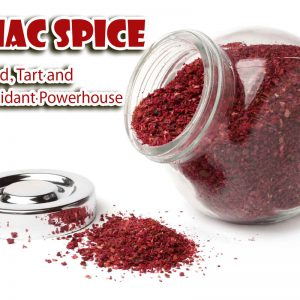The name sumac comes from the Aramaic word summaq which means “dark red.” As far back as 2,000 years ago, it was noted for its healthful properties, namely as a diuretic and anti-flatulent, by Roman Emperor Nero’s physician. Before lemons made their way into Europe, the Romans used sumac to add a tanginess to dishes. In North America, indigenous...
Tag: <span>sumac</span>
Sumac
Sumac (/ˈsuːmæk/ or /ˈʃuːmæk/), also spelled sumach, is any of about 35 species of flowering plants in the genus Rhus and related genera in the cashew family. Sumacs grow in subtropical and temperate regions throughout the world, including East Asia, Africa, and North America. Sumac is used as a spice, as a dye, and in medicine. Sumacs are dioecious shrubs and small trees in the family Anacardiaceae that can reach a height of one to ten meters (3–33 ft)....
What is Sumac and how to use it
Sumac is a spice that is popular in the Middle East. Sumac berries grow on the Rhus Coriaria shrub, which is typically found in high plateau areas of the Mediterranean like Sicily, due to its wild, rocky lands. Sumac also grows in Turkey and can be found in parts of Iran. When the berries are fully ripe,...
SUMAC Spice: Bright Red, Tart And An Antioxidant Powerhouse
Sumac is a popular ingredient in the Mediterranean and Middle Eastern cuisines. In addition, people use it therapeutically in herbal medicine practices. This article explores everything you need to know about sumac, including what it is, its potential health benefits, and how to use it. What is sumac? Sumac is a flowering shrub known scientifically...

